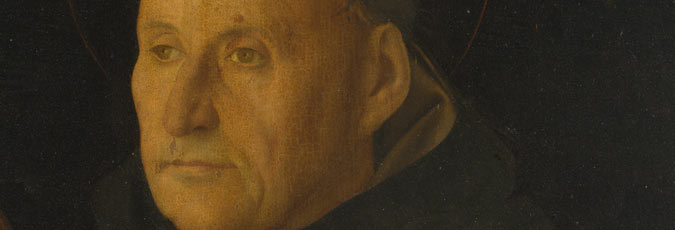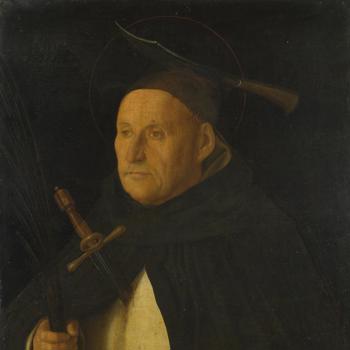Giovanni Bellini, active about 1459; died 1516
'A Dominican, with the Attributes of Saint Peter Martyr', about 1490–1500
Oil on poplar, 59.1 x 48.3 cm
NG808
For most of the 19th century, A Dominican, with the Attributes of Saint Peter Martyr was considered an important work by Giovanni Bellini. Yet despite bearing the artist’s signature, it has often since been attributed to his workshop, or even to his brother Gentile. The main reason for this diminished status was probably the painting’s relatively poor condition and the fact that it was altered at a later date from a portrait into an image of Saint Peter Martyr by the addition of the saint's attributes.
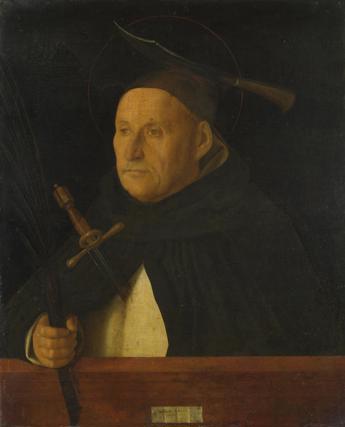
Acquisition
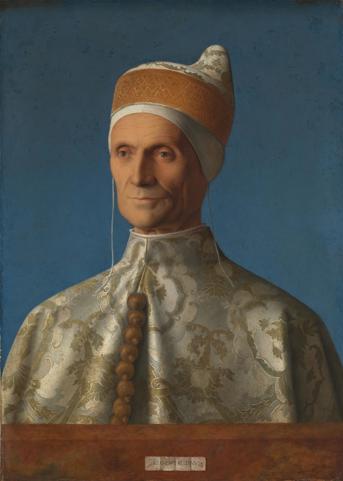
In the first half of the 19th century, this painting was one of the most prestigious works in the Sommi Picenardi collection in Cremona, Italy. It was purchased by the National Gallery in September 1869 as a work by Giovanni Bellini, and for a while was displayed in the same room as Bellini’s celebrated Doge Leonardo Loredan.
By about 1880, however, the Italian art historians Giovanni Morelli and Gustavo Frizzoni had begun to doubt Bellini’s authorship, arguing that the signature on the scrap of paper illusionistically attached to the parapet was fake. They attributed the work instead to Bellini’s brother, Gentile. From this point onwards the picture has never been considered an autograph work by Giovanni.
The making of a saint
Early in the 20th century, the art historian Detlev von Hadeln was the first to argue that the attributes of Saint Peter Martyr – the dagger, the cleaver embedded in his skull, the palm of martyrdom and the halo – were later additions to the work.
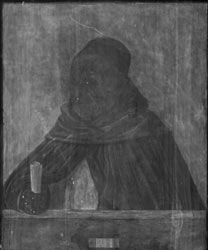
In 1950, Gallery curator Martin Davies published an X-radiograph of the picture. It confirmed that these elements had been added at a later stage, and that the friar had originally held a scroll with his right hand. The painting’s original green background had also been overpainted in a dark colour, perhaps at the same time as the additions.
In order to establish the date of these alterations, pigment samples were taken from the saint’s attributes, particularly the peculiar dagger protruding from his breast. The dagger was painted over an old discoloured varnish. It also contains lead-tin yellow pigment, which was not in use in Italy after the 17th century. The alterations must therefore precede this date.
Additional research into the dagger itself has narrowed the dating further. Tobias Capwell, Curator of Arms and Armour at the Wallace Collection, has pointed out that the specific type of parrying dagger depicted in the painting, with its swelling guard terminals and faceted pommel, seems to have been in use about 1580–1620, and the alterations may date to that period or a little later.
Why the portrait was transformed into Saint Peter Martyr is more of a mystery. The man’s habit shows that he is a Dominican friar, so it is worth proposing that the painting might have belonged to a Dominican friary. Perhaps the attributes of Saint Peter Martyr were added when it was decided to sell the painting, in order to transform a portrait of an unknown Dominican friar into a more suitable and saleable religious subject picture.
Infrared reflectography
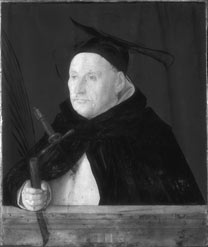
An infrared reflectogram has revealed further elements that might support an attribution to Giovanni Bellini himself. The face of the friar shows an extremely detailed and refined underdrawing. The signature – in italics, and not the capitals that were often used by Bellini’s workshop – is a little retouched, but basically original. Moreover, a curtain is visible underneath the dark background, which was originally green, giving the portrait a level of sophistication that is lost in its overpainted state.
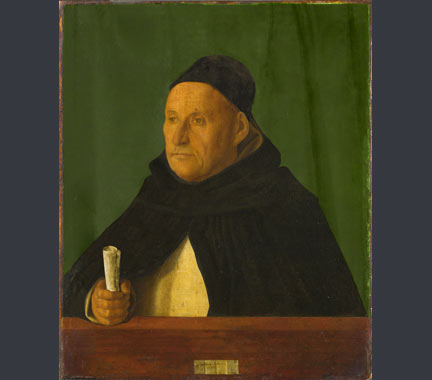
Attribution to Giovanni Bellini
Recent technical examination has demonstrated that the National Gallery’s painting has lost many of its original qualities. Yet despite its worn and restored surface, the friar’s face shows something of the painter’s skilful control of both volume and light. It is particularly striking to compare it with ‘Portrait of a Young Man’ in the National Gallery of Art, Washington, D.C. Also bearing a signature in italics, it is considered by most art historians to be an autograph work by Giovanni Bellini.
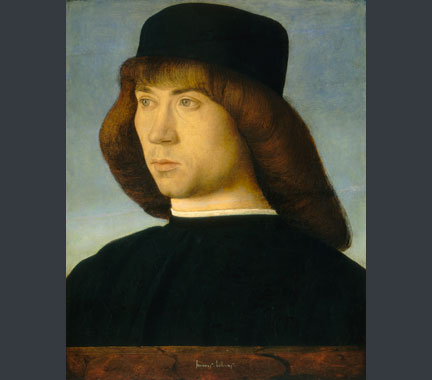
Image courtesy of the Board of Trustees, National Gallery of Art, Washington, D.C.
Revising dates
The picture has always been considered to be a late work, and perhaps also for this reason often attributed to Bellini’s workshop, which was extremely productive in his late career. It seems to be a little earlier than ‘Doge Leonardo Loredan’, which from historical and circumstantial evidence can be dated to 1501–2. Taking into account the stylistic affinities with the Washington portrait, 'A Dominican’ may therefore be a work of the mid-1490s. At this time we know that Giovanni Bellini was particularly interested in Flemish portraiture, such as that of Hans Memling, which is clearly shown in the setting and style of these two portraits.
Antonio Mazzotta is the Pidem Curatorial Assistant at National Gallery. This material was published on 30 June 2010 to coincide with the exhibition Close Examination: Fakes, Mistakes and Discoveries
Further reading
C. Baker and T. Henry, ‘The National Gallery Complete Illustrated Catalogue’, London 1995, p. 33
M. Davies, ‘Un dipinto belliniano radiografato a Londra’, ‘Arte Veneta’, IV (1950), p. 169
M. Davies, ‘The Earlier Italian Schools’, 2nd edn (revised), London 1961, pp. 67–8, n. 808

